Japan is a land of contrasts, from vibrant cities to tranquil landscapes, from ancient traditions to cutting-edge technology. But what about the weather? If you intend a trip to Japan, you may wonder, can it snow in Japan? The answer is a resounding yes, as Japan is known for its winter scenery and exciting winter sports.
From the powdery slopes of Hokkaido to the lively snow festivals in Sapporo, here’s everything you need to know about snowfall in Japan.
Japan’s Seasons: From Cherry Blossoms to Snowy Peaks
Japan is known for its unique blend of tradition and modernity, bustling cities, peaceful countryside, and stunning natural beauty. One of the fascinating aspects of this island nation is its four distinct seasons, each with its characteristics and cultural traditions. From the delicate pink blossoms of spring to the colorful foliage of autumn, Japan’s seasons are a testament to the country’s beauty and diversity.
Spring Season
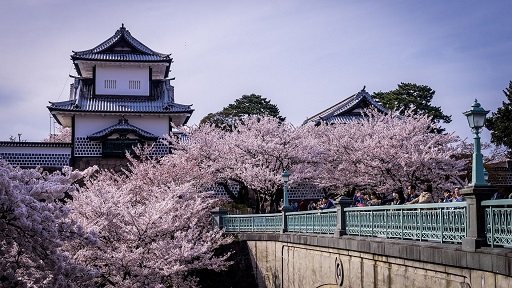
Spring in Japan is heralded by the arrival of cherry blossoms (sakura), which usually bloom from late March to early April. The blooming of cherry blossoms is a nationally celebrated event. Many Japanese people celebrate hanami, or cherry blossom festivals, where they gather with friends and family to eat and drink among the beautiful pink blossoms.
Summer Season
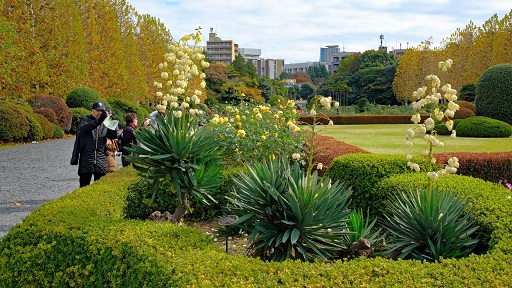
Summer in Japan is known for its hot & humid weather, with temperatures often surpassing 30°C or more. Typhoons, or tropical cyclones, also occur during this season and can bring heavy rains and strong winds to the country. Despite the heat, summer in Japan is a lively time with many festivals and events throughout the country, including the Obon Festival, which honors the spirits of the ancestors.
Autumn Season
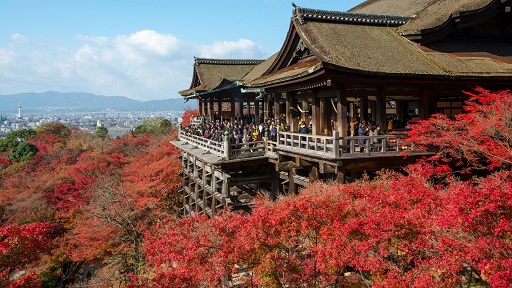
Autumn in Japan is a season of vibrant colors when the trees turn bright shades of red, orange, and yellow. Autumn foliage, or koyo, is a popular natural phenomenon in Japan, and many people enjoy hiking or driving to see the stunning array of colors. Autumn is also the time of harvest festivals (matsuri) when communities come together to celebrate the season’s fruits with food, music, and dance.
Winter Season
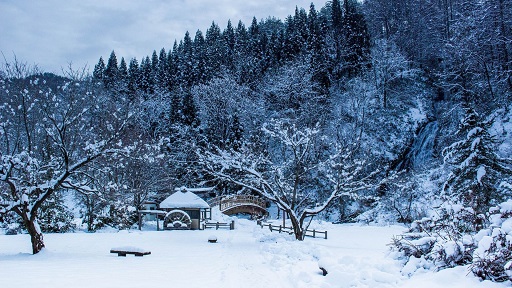
Winter in Japan brings cold temperatures and heavy snowfall, especially in the country’s northern regions. Despite the cold, winter in Japan is a popular season for outdoor activities, such as skiing and snowboarding. This is also the time of year for traditional New Year celebrations, where people visit temples and shrines, eat traditional foods, and spend time with family.
Exploring Japan’s Legendary Snowfall
Japan is a country where there is a lot of snowfall during the winter season. The country’s unique geography and location make for varied winter weather conditions. Whether you’re a skier, snowboarder, or just looking for a leisurely winter vacation, Japan has something for everyone.
Snow dominates Japan’s winter landscapes, from the northern regions of Hokkaido to the central mountains of Honshu. The snowfall in Japan is beautiful and greatly impacts the country’s culture, traditions, and daily life.
Here are a few places in Japan that are among the snowiest in the country.
Hokkaido
Japan’s northernmost island is famous for its beautiful nature, hot springs, and snow. Hokkaido is one of the snowiest places in the world, with some areas getting over 18 meters of snow every winter.
The snow season in Hokkaido usually starts in November and lasts until April, with the heaviest snowfall occurring in January and February. During this time, temperatures can drop below freezing, making the region the perfect destination for winter sports enthusiasts.
Tohoku
Tohoku is located northeast of Honshu, Japan’s main island, known for its beautiful mountains, rugged coastline, and rich cultural heritage. In winter, Tohoku is transformed into a winter wonderland when snowfall blankets the region from December to March.
Tohoku is one of the snowiest regions in Japan, with some areas receiving over 10 meters of snowfall each year. The snow is often heavy and wet, making it ideal for snow activities such as snowshoeing, cross-country skiing, and snowmobiling.
Hokuriku
Hokuriku is located on the west coast of Honshu, Japan’s main island. The region is known for its beautiful scenery, traditional crafts, and delicious seafood. Hokuriku gets a lot of snow in winter, turning the region into a winter wonderland.
The winter season in Hokuriku usually lasts from December to February, with hefty snowfall from January to February. The region receives an average of 2 to 4 meters of snow every winter, creating a beautiful winter wonderland.
Niigata
Niigata is a prefecture on the northwest coast of Honshu, Japan’s main island. The prefecture is known for its rice paddies, hot springs, and heavy snowfall. Niigata is one of the snowiest regions in Japan, with some areas receiving over 3 meters of snowfall each year.
The snow season in Niigata usually lasts from November to April, with the heaviest snowfalls occurring in January and February. During this time, temperatures can drop below freezing, making the region the perfect destination for winter sports enthusiasts.
Nagano
Nagano is a prefecture located in the central part of Honshu, Japan’s main island. The region is known for its beautiful mountains, hot springs, and rich cultural heritage. In winter, Nagano is transformed into a snowy wonderland. From December to March, the region is covered in heavy snowfall.
Nagano is one of the snowiest regions in Japan, with some areas receiving over 4 meters of snowfall each year. The snow is often dry and powdery, making it perfect for winter sports like skiing and snowboarding. Nagano has several ski resorts, including Hakuba and Shiga Kogen, where the 1998 Winter Olympics were held.
Tokyo
Tokyo is the capital of Japan and is located in the Kanto region on the east coast of Honshu, Japan’s main island. Tokyo does get some snow in the winter, but not as much as other regions of Japan, such as Hokkaido or Nagano.
Winter in Tokyo usually lasts from December to February, with occasional snow. However, the snow is typically light and doesn’t accumulate as much as in other regions, averaging about 10 cm of snow per year.
Aomori City
Aomori City is the capital city of Aomori Prefecture, located on the northern tip of Honshu, Japan’s main island. During the winter, Aomori City receives a lot of snow, turning the region into a snowy wonderland.
Winter in Aomori City usually lasts from December to March, and heavy snowfall occurs during this time. The snow is often dry and powdery, making it perfect for winter sports like skiing and snowboarding. Several ski resorts in Aomori, including Hakkoda Ski Resort, are known for their deep powder snow and challenging terrain.
Winter Experiences in Japan
Japan has a rich winter sports culture thanks to its heavy snowfalls and breathtaking mountain ranges. From skiing and snowboarding to ice fishing and snowshoeing, Japan offers visitors a wide range of winter sports and activities.
Skiing and Snowboarding
Japan is known for its world-class skiing and snowboarding, especially in the northern regions of Hokkaido and Tohoku. Here’s where you can experience it:
Hokkaido
Hokkaido is Japan’s northernmost island, known for its excellent powder snow. The region is home to many world-class ski resorts, including Niseko, which is consistently ranked among the top ski resorts in the world. Other top destinations in Hokkaido include Furano, Rusutsu, and Tomamu.
Tohoku
The Tohoku region is located north of Honshu, Japan’s main island. The region is known for its heavy snowfall and has several excellent ski resorts, including Zao Onsen. In addition, it’s famous for its “snow monsters” (trees covered with snow and ice) and Appi Kogen, which offers a wide range of slopes for all skill levels.
Nagano
Nagano is a prefecture located in the central part of Honshu. The region hosted the 1998 Winter Olympics and is home to several excellent ski resorts, including Hakuba, which offers a wide range of slopes for all skill levels, and Shiga Kogen, one of the largest ski resorts in Japan.
Niigata
Niigata is a prefecture located on the west coast of Honshu. The region is known for its heavy snowfall and is home to several excellent ski resorts, including Myoko Kogen, which offers a variety of slopes and stunning views of the surrounding mountains. Yuzawa is another popular ski resort easily accessible from Tokyo and offers a range of runs for all skill levels.
Snow Festivals and Events
Snow festivals and events are a big part of winter in Japan, with many regions hosting unique and festive events to celebrate the snowy season.
Sapporo Snow Festival
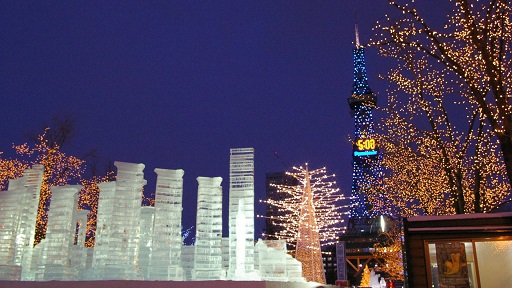
Sapporo Snow Festival is amongst the most famous winter events in Japan. It’s held in early February in Sapporo, Hokkaido. When you enter the festival grounds, you’ll be greeted by an incredible display of giant snow sculptures, intricate ice carvings, and a lively winter wonderland atmosphere.
Stroll the festival grounds and marvel at the incredible craftsmanship used to create these impressive snow structures. The festival takes on a magical atmosphere in the evening as the snow sculptures are illuminated with colorful lights, providing a breathtaking spectacle that will leave you speechless.
Otaru Snow Light Path Festival
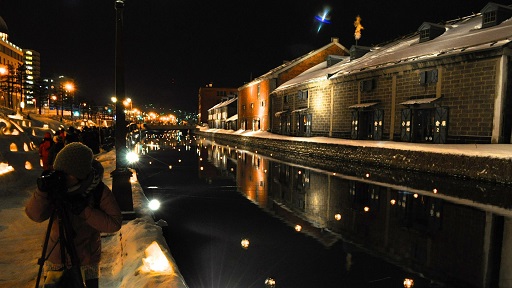
The Otaru Snow Light Path Festival is a magical winter wonderland in the charming port city of Otaru, Hokkaido. The festival lasts a week in early February each year, transforming the town into a romantic and whimsical snow wonderland.
As you stroll through the city, you’ll be mesmerized by the thousands of tiny snow lanterns that line the streets and canals, casting the city in a warm and inviting glow. The illuminated ice sculptures and projections add to the enchanting ambiance.
The romantic Canal Plaza is one of the highlights of the festival. Hundreds of illuminated lanterns float on the canal, creating a fascinating and enchanting atmosphere.
Hirosaki Castle Snow Lantern Festival
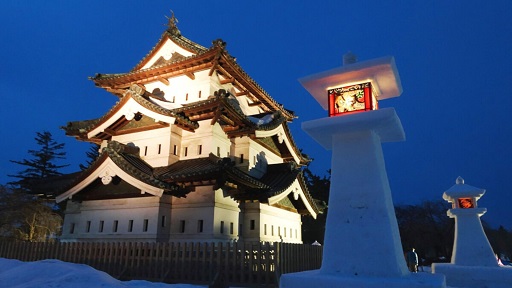
The Hirosaki Castle Snow Lantern Festival is an enchanting winter event in the historic city of Hirosaki, Aomori. The festival is held annually in early February when the city is covered in snow and transformed into a magical wonderland.
As you approach the castle, you’ll be impressed by hundreds of snow lanterns and sculptures that illuminate the castle grounds and create a dreamlike atmosphere. You can stroll through the castle grounds and admire the ornate details of the snow sculptures depicting scenes from Japanese mythology and folklore.
One of the festival’s highlights is the snow slides, popular with children and adults alike. You can also try making your snow lantern or participate in a snowman-building contest.
Yokote Kamakura Snow Festival
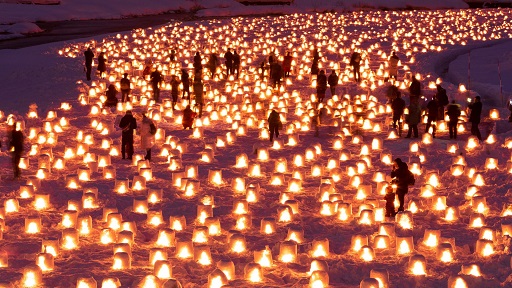
The Yokote Kamakura Snow Festival is a unique and traditional winter event in the small town of Yokote in Akita. The festival is held annually on February 15 and 16, celebrating the winter season and local culture.
Walking through town, you’re greeted by hundreds of small snow huts called kamakura, decorated with traditional paper lanterns. These huts are open to the public and serve as cozy shelters to warm up with hot sake and grilled mochi.
One of the festival’s highlights is the mochitsuki, or rice cake pounding. This traditional activity involves pounding rice into a sticky paste and forming it into rice cakes. You can even try making your rice cake and taste the delicious result.
Zao Snow Monster Festival
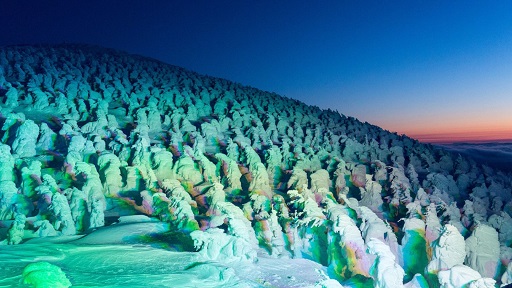
The Zao Snow Monster Festival is a magical winter event held at Zao Ski Resort in Yamagata Prefecture. The festival is held every year from late January to mid-February and is a celebration of the famous “snow monsters” that form on the trees in the area.
When you arrive at the festival, you’ll be greeted by a winter wonderland of illuminated trees, snow sculptures, and traditional Japanese performances. In the scenic Zao Mountains, you can enjoy various winter activities such as skiing and snowshoeing.
One of the festival’s main attractions is the “juhyo” or “snow monster” viewing, where you can observe the unique phenomenon of trees covered with heavy snow and ice to look like giant monsters. You can take a gondola ride to see the snow monsters up close or join a guided tour to learn more about this natural wonder.
Conclusion
Japan is a winter wonderland with various snowfalls in its regions. So whether you want to hit the slopes, attend a snow festival, or just admire the beauty of nature, Japan has something for everyone. So if you’re planning a winter vacation, don’t hesitate to bundle up and head to Japan for an unforgettable snow adventure.



